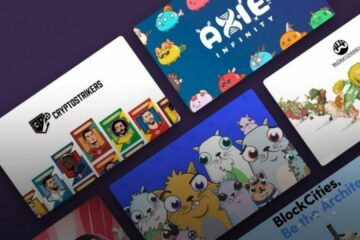The metaverse is not just virtual reality, it’s what happens when you mix VR with augmented reality. The world of Pokemon GO was our first taste of augmented reality, but now companies are already working on headsets that will allow us to completely immerse ourselves in virtual worlds. People have been predicting this for decades and finally, we might be there!
It sounds like science fiction, but this isn’t the future anymore – it’s happening right now. And these advances don’t just have implications for gaming – they’ll change everything from education to medicine to military strategy. This could be the most important thing since the invention of electricity!
What is the metaverse?
The term “metaverse” was originally coined in 1993 by a science fiction author named Neal Stephenson in his novel Snow Crash .
In the book, metaverses are described as virtual worlds where humans can live their lives – think Second Life or World Of Warcraft. But unlike video games, these will be persistent universes that evolve over time with every action having consequences. These worlds would exist independently from all other existing servers and players could connect to them through portals (think of Facebook logins).
Metaverses would combine the best elements of video games and social networks to create a massive virtual environment composed of users’ profiles, 3D chat rooms and online communities. Metaverses would go beyond what we currently know as traditional MMORPGs, where the role-playing is limited to a single game world. Instead, Stephenson imagined that people would spend their time connecting with friends, sharing messages and building virtual businesses.
Metaverses would be the ultimate social platform – a huge collection of worlds where players could interact in any way they liked without rules or limitations. And this isn’t just sci-fi anymore – it’s happening right now!
Why Facebook is interesting by metaverse?
While Facebook may seem like a strange name to associate with the metaverse, it’s actually the best example we have of what these virtual worlds might look like .
By now, you’ve probably heard about Facebook Spaces – their recently announced AR feature that allows users to explore virtual reality with their friends. The app is still in its early stages and only works on Oculus Rift headsets for now, but it’s easy to see where they’re going with this — spaceships and avatars — and we’re excited.
Facebook Spaces could be just the beginning of Zuckerberg’s plan to build an entire metaverse. When Facebook bought Oculus back in 2014 , people initially thought they were simply getting into gaming. But as we saw by last year’s F8 conference, Facebook has much bigger plans for VR.
They want to create a platform where people can connect with each other in a completely virtual environment. This isn’t just about gaming – it’s about creating a new way for humans to socialize and interact. And this is only the beginning – as more people get access to VR headsets, Facebook will be able to expand their reach even further.
Are we living in a metaverse yet?
So are we living in a metaverse yet? The answer is yes and no. We’re not quite there yet, but the technology is rapidly evolving and we’re getting closer every day.
Facebook Spaces is just the beginning – as more people get access to VR headsets, Facebook will be able to expand their reach even further. Eventually, we might have a full-fledged metaverse where you can connect with anyone from around the world in virtual reality.
Augmented Reality apps are making the shift towards a more immersive environment – and their followers would feel right at home in a metaverse. Virtual chat rooms could become as common as email or text messaging , and every day there will be new ways for people to interact and share experiences .
The future of human connection is coming, whether you like it or not! Are we living in a metaverse yet? We sure hope so!
The metaverse and NFTs
The major difference between a NFT and a physical good is the tokenization. A physical good only has one copy, making it non-fungible. A NFT will have many copies, which make it fungible.
NFTs are not limited to stocks or other financial assets or commodities. They can also represent things like tickets, artwork, licenses, and loyalty points that can be traded and exchanged.
Non-fungible Token (NFT) is the term for tokens on blockchains that each have their own unique characteristics and features within a system. They differ from most cryptocurrencies in that they’re not interchangeable and you can’t create your own versions of them – they’re individually owned items. Non-fungible tokens are perfect for representing digital assets, as each one is unique and can’t be replicated.
The use case of NFTs have expanded far beyond the initial expectation. They are now being used to represent virtual goods, such as in-game items, weapons, and clothing. But the potential doesn’t stop there – they could also be used to represent real-world assets, such as property or cars.
The metaverse will need a way to track and store these virtual assets, and that’s where blockchain comes in. By using a blockchain, we can create a secure and transparent ledger of all transactions involving NFTs. This will help ensure that the ownership of these virtual assets is always clear and that they’re not being duplicated.
In a decentralised metaverse, users will need to know for certain that they’re buying the real thing. NFTs are the perfect solution for this problem, as each token is unique and can be easily checked by anyone using a blockchain explorer .



0 Comments